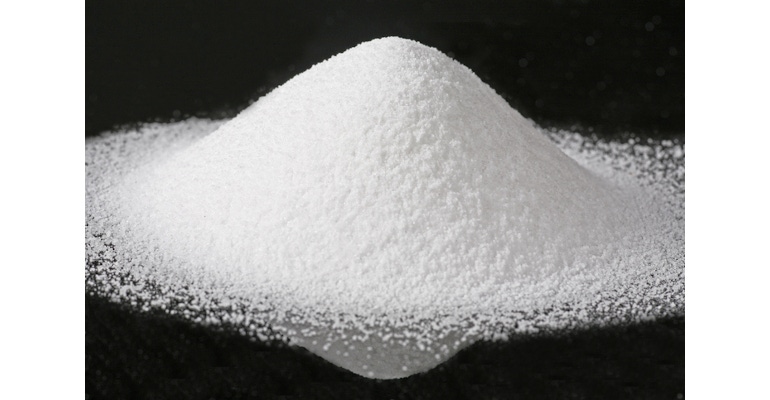Could Spray-On Nanotechnology Enhance Flexible Electronics?
Researchers have developed an ultra-thin coating of zinc-oxide nanocrystals that can be spray-deposited on devices to create touchscreen displays.
April 26, 2023

Scientists have been promising to deliver flexible electronic devices for some time, but they are still in the process of working out the technology to make market-ready products possible. An inkable nanomaterial that scientists say could be used as a spray-on electronic coating for ultra-thin, lightweight, and bendable displays and devices could help them achieve this goal by providing a combination of features to enable flexible touchscreens, they said.
Researchers at RMIT University in Australia led a global team of scientists to review production strategies, capabilities, and potential applications of the material, which is composed of zinc oxide nanocrystals. Scientists have developed a coating of this material, which can help create displays and provide other enhancements for future flexible technologies, including mobile phones and computers.
The group aimed to outline strategies for the colloidal synthesis of zinc oxide nanocrystals (NCs) "provide a critical analysis of the synthetic methods currently available for preparing ZnO colloids," the researchers wrote in an abstract for a paper on the research published in the journal Chemical Reviews. They are currently seeking partnerships to help them address the next set of challenges for their zinc oxide-based coating to bring flexible electronics that use it to market.
“Progress in nanotechnology has enabled us to greatly improve and adapt the properties and performances of zinc oxide by making it super small, and with well-defined features,” explained RMIT University’s Associate Professor Enrico Della Gaspera, from RMIT's School of Science, in a post on RMIT's Web site.
Researchers developed an ink out of the material that can be deposited as an ultra-thin coating onto electronics in a process similar to ink-jet printing or airbrushing painting, they said. However, the coating is hundreds of thousands of times thinner than a conventional paint layer and has unique features that make it useful for electronic devices.
“These coatings can be made highly transparent to visible light, yet also highly electrically conductive—two fundamental characteristics needed for making touchscreen displays,” Della Gaspera, who co-led the research, said.
The nanocrystals also can be deposited at low temperature, expanding the type of substrates on which it can be deposited to ones such as plastic, which are resilient to flexing and bending, the researchers said. This is another aspect of the material that lends itself to the development of flexible electronics that have the durability for market distribution, they said.
Benefits of the Nanomaterial
Zinc oxide has numerous benefits for use in the manufacturing processes required for producing electronics at scale. For one, zinc is an abundant element in the Earth’s crust—more abundant than many other metals currently used in electronics production, including tin, nickel, lead, tungsten, copper, and chromium.
“Zinc is cheap and widely used by various industries already, with global annual production in the millions of tonnes,” noted Joel van Embden, a professor at RMIT who also co-led the research.
Zinc oxide also has been extensively studied by scientists starting from the early 20th century, with a lot of traction around the material happening in the 1970s and 1980s concurrent with the semiconductor industry. This gives scientists a great head start in using it to produce the next generation of flexible electronics, the researchers said.
Zinc oxide also is safe and biocompatible and found already in products such as sunscreens and cosmetics, so it has a number of current and potential uses. Aside from bendable electronics, zinc-oxide nanocrystals also could be used for self-cleaning coatings, antibacterial and antifungal agents, sensors to detect ultraviolet radiation, and electronic components in solar cells and light emitting devices (LED), the researchers said.
Future Steps for Nanomaterial Coatings
Researchers said they are ready to explore the potential applications for their nanomaterial coatings and are seeking partners to help scale up their current approach from the lab to an industrial setting.
“Scalability is a challenge for all types of nanomaterials, zinc oxide included,” Della Gaspera acknowledged.“Being able to recreate the same conditions that we achieve in the laboratory, but with much larger reactions, requires both adapting the type of chemistry used and engineering innovations in the reaction setup.”
Researchers also need to address the shortfall in electrical conductivity that nanocrystal coatings have when compared to industrial benchmarks, which rely on more complex physical depositions, they said. This shortfall occurs because of the intrinsic structure of the nanocrystal coatings, which enables more flexibility but limits the ability of the coating to conduct electricity efficiently.
“We and other scientists around the world are working towards addressing these challenges and good progress is being made,” Della Gaspera said. “I am confident that, with the right partnership, these challenges can be solved."
About the Author(s)
You May Also Like

.jpg?width=300&auto=webp&quality=80&disable=upscale)

